Overview
The HAMSTAD Benchmarks are one outcome of the EU project HAMSTAD: Determination of liquid water transfer properties of porous building materials and development of numerical assessment methods (2000-2003). https://cordis.europa.eu/project/id/G6RD-CT-2000-00260
Within the project a consistent formulation of the governing equations for coupled heat, air and moisture transport, along with equations for boundary conditions were formulated, that also form the basis for the European standard EN 15026. The project members developed simulation methods to solve the coupled partial differential equations, hereby using different numerical methods and implementation techniques.
The test descriptions below are partially taken from the project report:
Hagentoft, Carl-Eric et al., HAMSTAD-WP2, Modeling, Chalmers University of Technology, Building Physics., 2002, Technical Report
This project report and the original benchmark description texts and input data, along with the result data gathered during the project is available in this archive:
Given the common mathematical formulation several benchmark cases were devised to verify the correct implementation of simulation codes. With the mathematical problem explicitely formulated and all input parameters provided, the results of the different tools should only differ due to variants in numerical methods and numerical parameters (grid, time integration method, tolerances etc.). Larger deviations indicate programming errors or unsuitable numerical methods. Software complying to the EN 15026 standard should be able to solve the test cases listed below with only marginal deviations from the reference solution.
The benchmarks presented below cover heat, moisture and air transfer. Each benchmark covers at least two transfer mechanisms. The cases have been selected in order to cover various combinations of climatic loads and combinations of materials.
Benchmark 1 – „Insulated roof“
An insulated roof structure is analysed in one dimension. The thermal insulation is facing the interior and there is a moisture barrier facing the exterior. The structure is perfectly airtight.
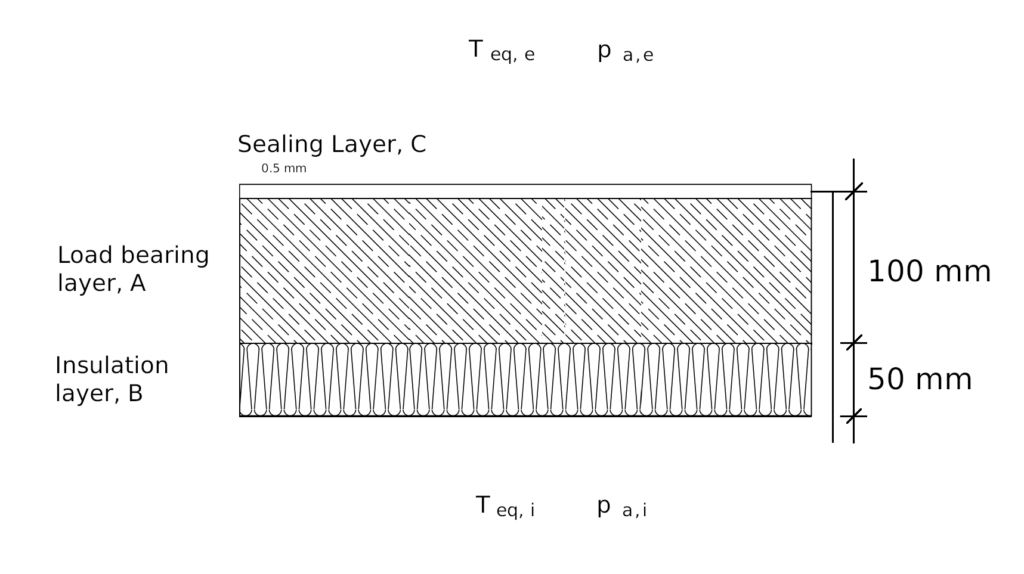
This first benchmark deals with internal condensation occurring at the contact surface between two materials. Materials have different thermal and moisture transport properties – one is capillary active load bearing material while the other is capillary non-active (infinite resistance to liquid flow) insulation; thermal conductivities of materials differ by factor 50 (at dry conditions).
Results
Of interest are moisture accumulation and drying processes during the first year and after a period of several years in the quasi-steady system. Moisture accumulation impacts the thermal conductivity of materials and condensation/evaporation also result in temperature changes within the construction and at the surface. Hence, the heat flux can be used as very sensible quantity to compare calculations. As can be seen in the next two diagrams, heat fluxes computed by most tools are very similar.
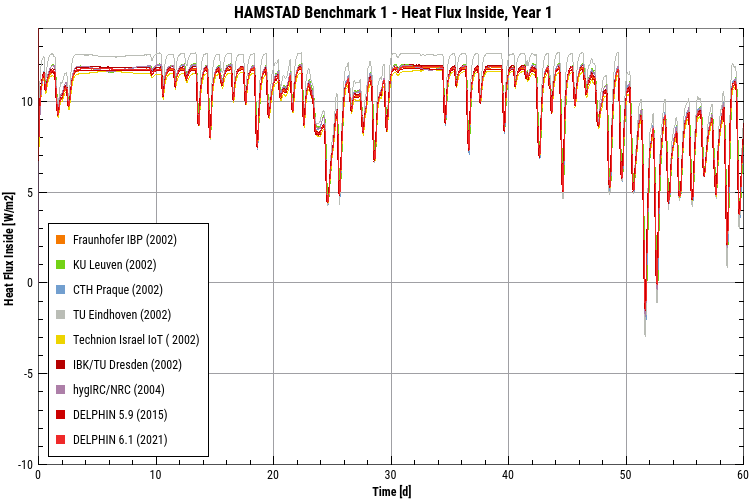
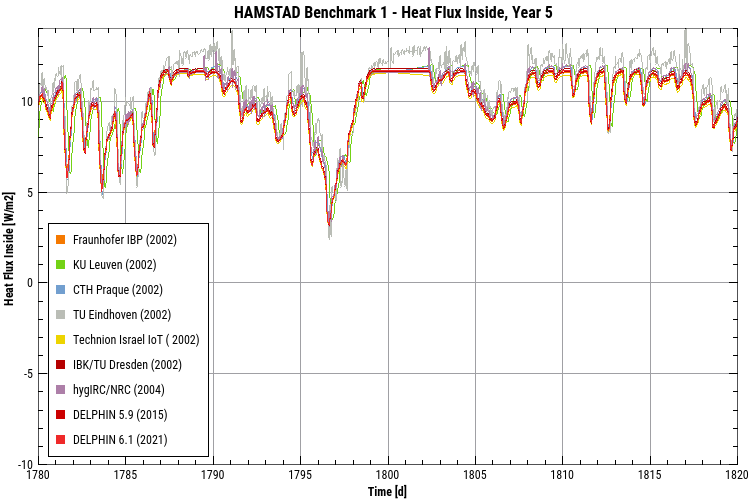
NOTE: Among the shown tools only DELPHIN (IBK/TU Dresden) and WUFI (Fraunhofer IBP) are still available. WUFI was validated in an earlier version from 2002.
Further of interest is the moisture accumulation, shown below for the two materials and the first and last year of the simulation.
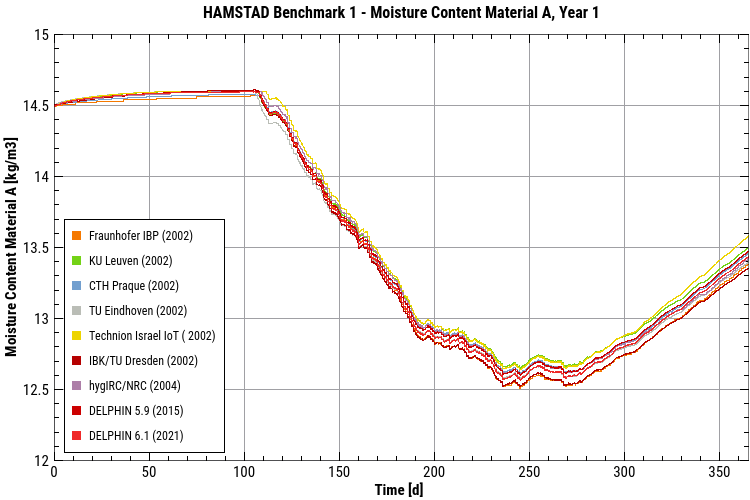
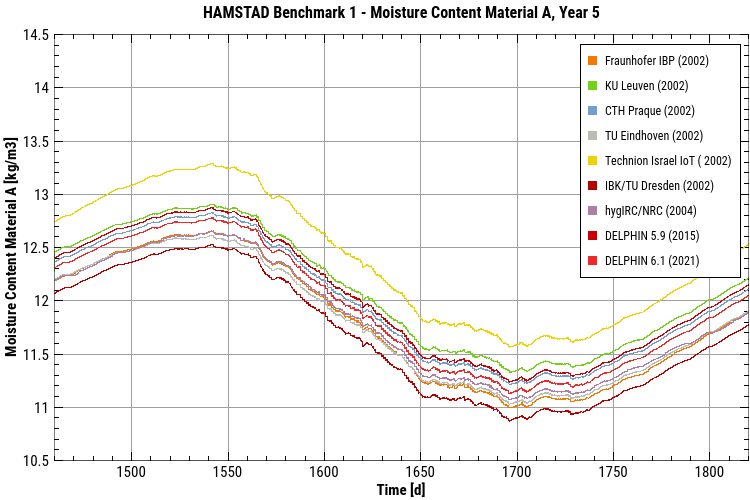

Looking at the moisture contents in material A, there are certainly some differences accumulated in year 5. However, the more accurate models still have a very narrow band of tolerance.
The rather large differences in Material B (insulation) in the first year stem from initial moisture redistribution and condensation at the cold load bearing material. Hereby the treatment of the material-material interface (mostly a numerical averaging issue individual to the tools) is the major cause of these deviations.
Benchmark 2 – „Homogeneous Wall (Analytical Benchmark)“
A homogeneous layer is analysed under isothermal conditions in one dimension. The layer is initially in equilibrium with the ambient air, having a constant relative humidity. At time zero there is a sudden change in the relative humidity of the surrounding air. The structure is perfectly airtight.
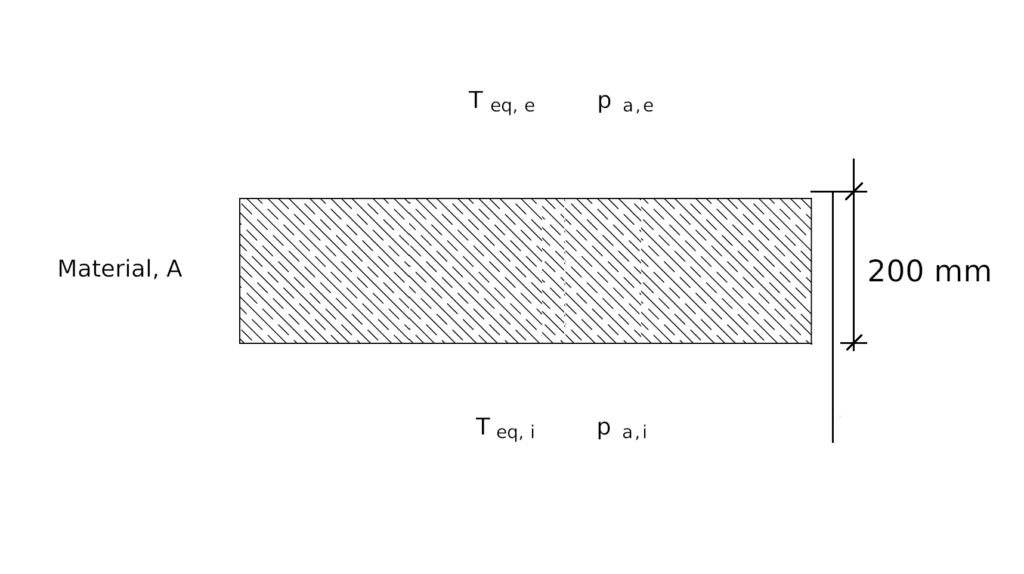
This benchmark deals with moisture redistribution in one material layer under isothermal conditions. Moisture movement is caused by the sudden changes in relative humidity of the surroundings. This case has an analytical solution. Note: this test case is very similar to the EN 15026 benchmark case, see DIN EN 15026 (2007), and even simpler (isothermal).
Results
The isothermal drying of the construction is evaluated by comparing moisture content profiles after 100, 300 and 1000 hours of simulation time.
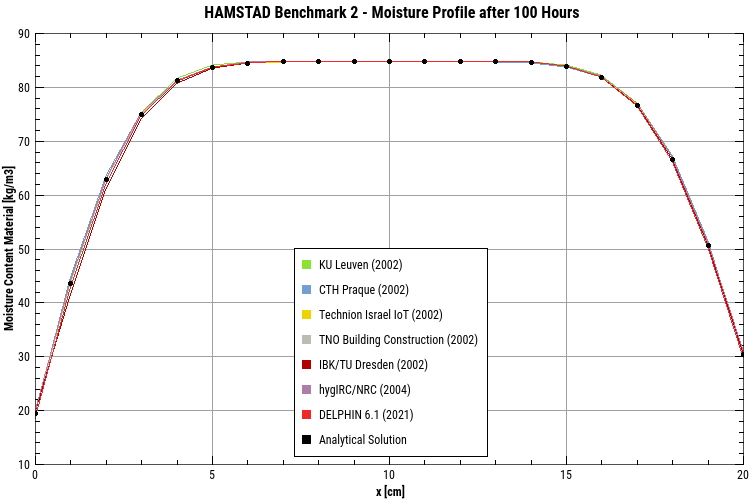
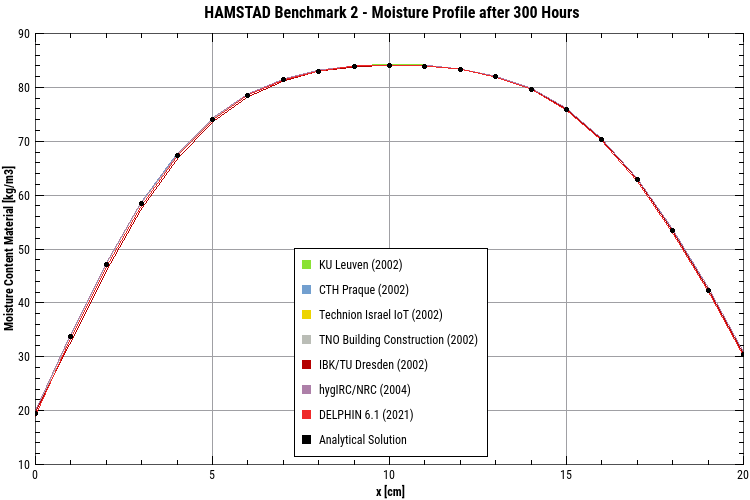
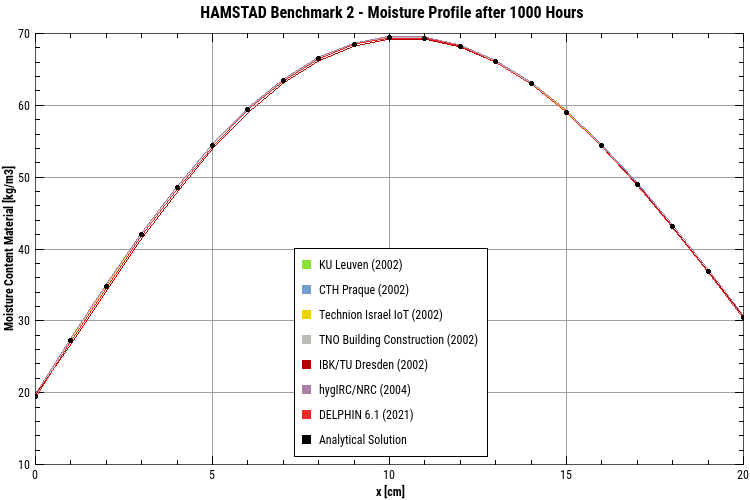
The results of all participating tools are nearly identical. The test case itself can be considered, similarly to the one in EN 15026, to be the absolute minimum a simulation solver should be capable of. However, because nearly all relevant features and potential problem sources are missing, this benchmark does not allow any judgement towards usability of a tool for any engineering problem cases.
Benchmark 3 – „Light weight wall“
The third benchmark deals with an air transfer through a single material layer. Moisture transfer is caused mainly by the air flow through the layer, and also by the moisture and temperature gradients across the layer.
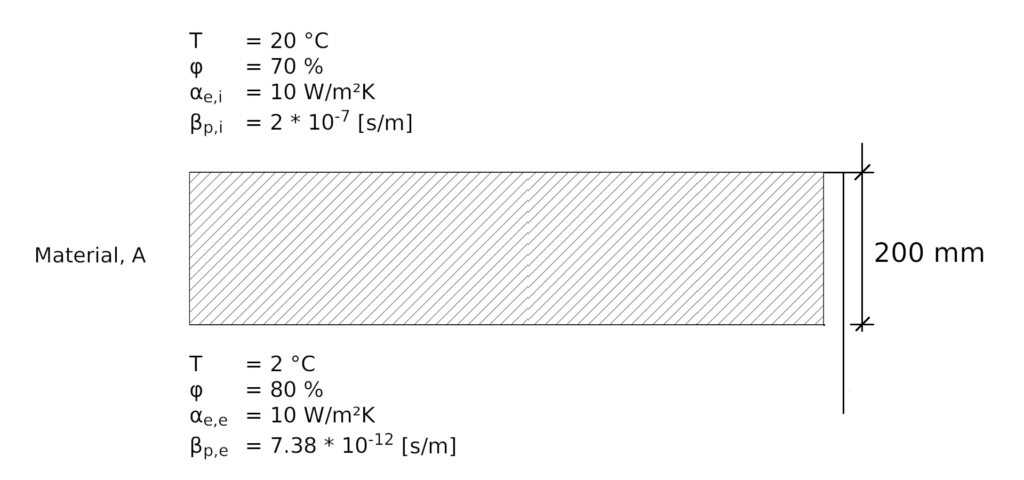
Results
The test evaluations how the imposed air flow through the material convectively transports moisture and enthalpy. Sensor values at different locations inside the material show the correct application of the change in pressure drop between 20 and 21 days.
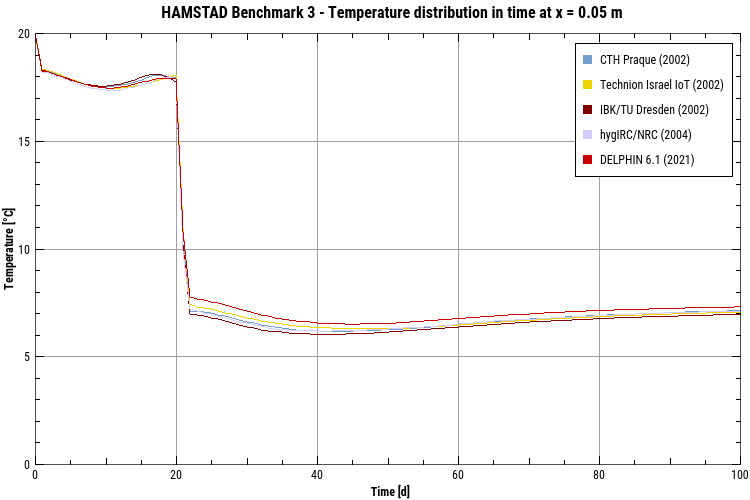
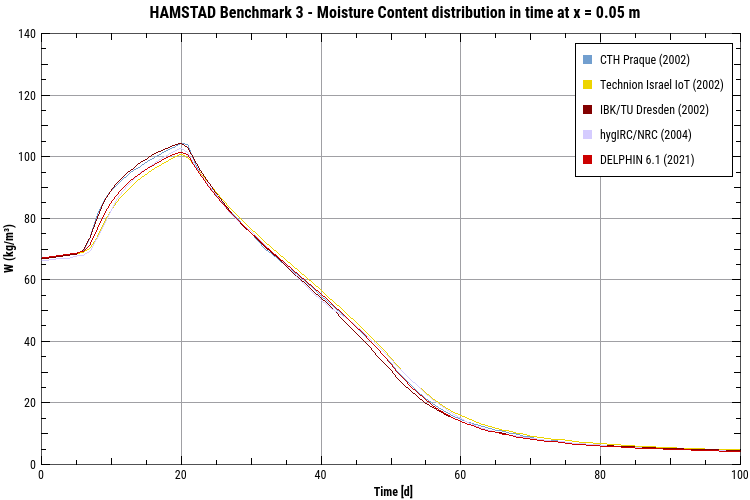
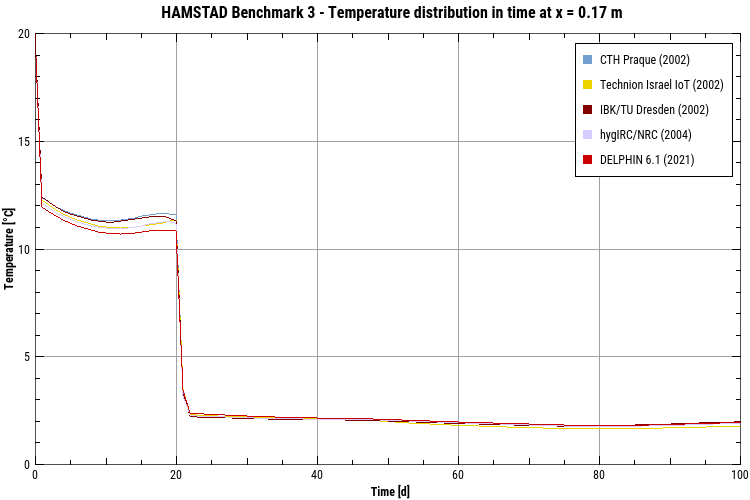
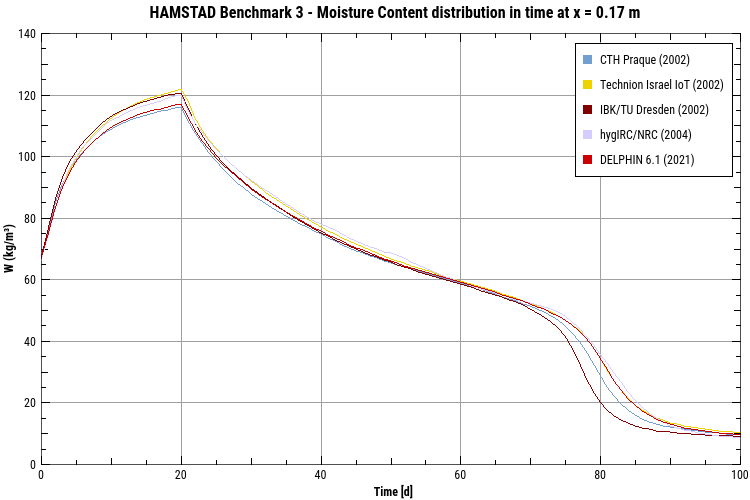
Benchmark 4 – „Response analysis“
A wall with a hygroscopic finishing material at the inside is analysed in one dimension. The wall is submitted to subsequent relative humidity, heat and moisture loads at the inner and outer surface. The structure is perfectly airtight.
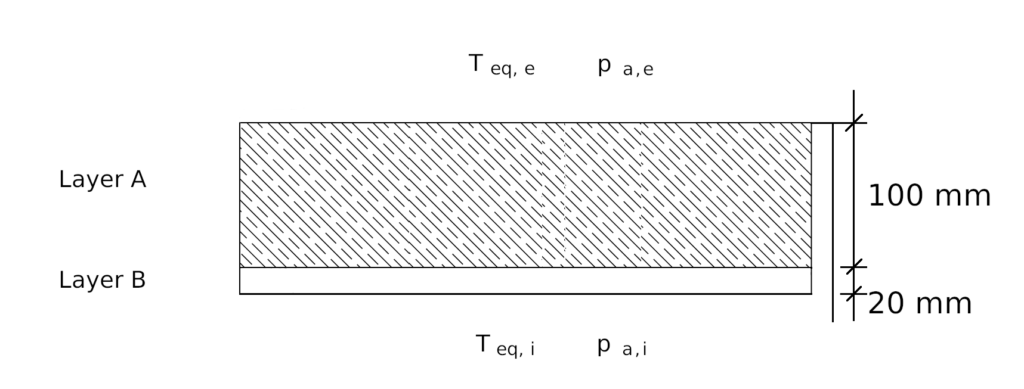
The fourth benchmark deals with the heat and moisture movement inside the wall with hygroscopic finishing material due to varying boundary conditions. The simulation model must capture the various moisture and temperature flows and handle the strong non-linearities arising from rapidly changing wetting and drying conditions. Also, this benchmark triggers several model limitations (risk of over-filling due to imposed rain and interstitial condensation). Due to the numerical challange (requires fine grid, accurate convergence control, small time steps) also serves as a performance/efficiency benchmark.
Results
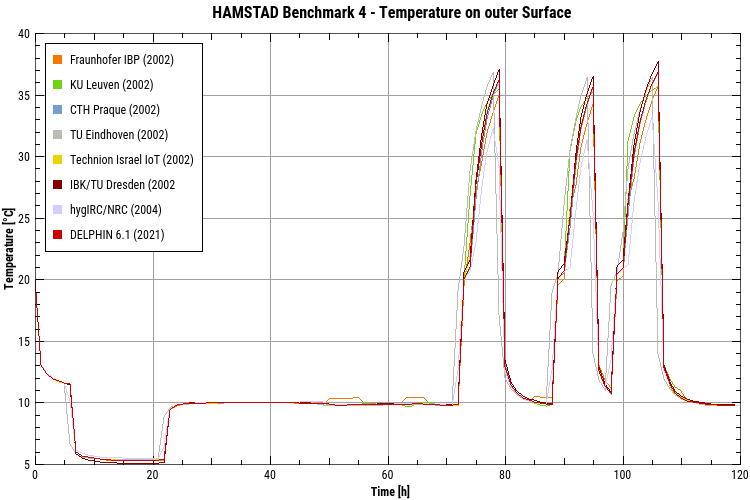
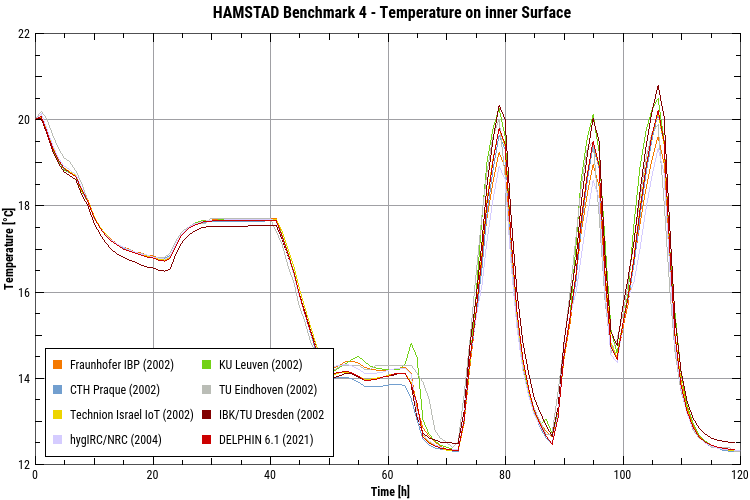
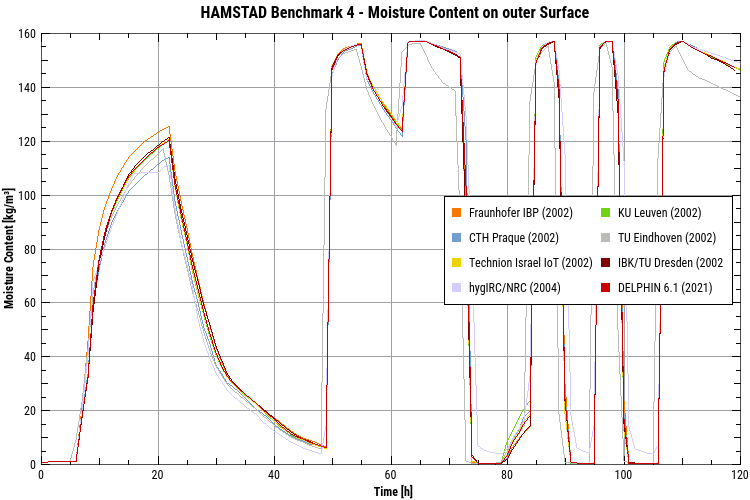
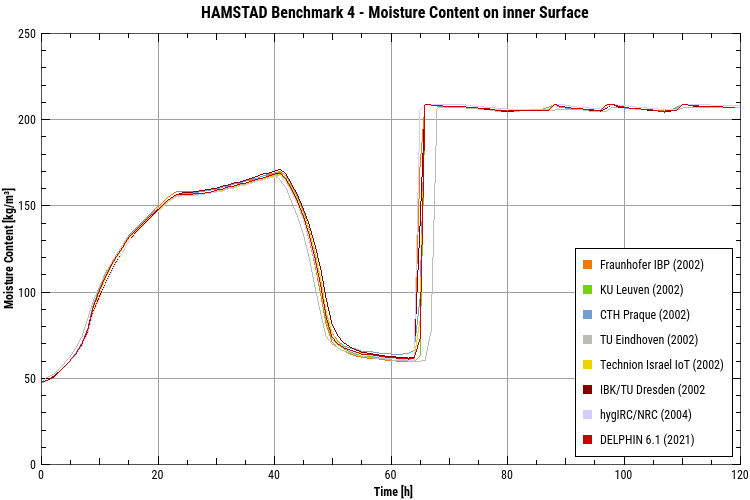
Most tools capture the characteristics of the simulation quite well. Some deviations like the temperature differences between 50 h and 70 h of the IBP-tool in the „outer surface temperature“ diagram can be explained by incomplete or at least unspecific model description. In this case it is not specified, whether evaporation fluxes shall be considered, when the surfaces of the construction is completely covered with water during rain events. The IBP tool WUFI disables evaporation in this case, all other tools keep evaporation active.
While the physical results are comparible for most tools, the simulation times needed to achieve these results were very different. The DELPHIN model takes due to its adaptive time step integrator only a few seconds to calculate the test, whereas other tools take many minutes or hours to complete with the requested accuracy (one has to manually limit integration time steps to few seconds and use a very fine grid). Hence, this benchmark is also very well suited to evaluate the numerical performance of simulation models.
Benchmark 5 – „Capillary active inside insulation“
An inside insulated wall structure is analysed in one dimension. Properties of capillary active insulations are calculated.
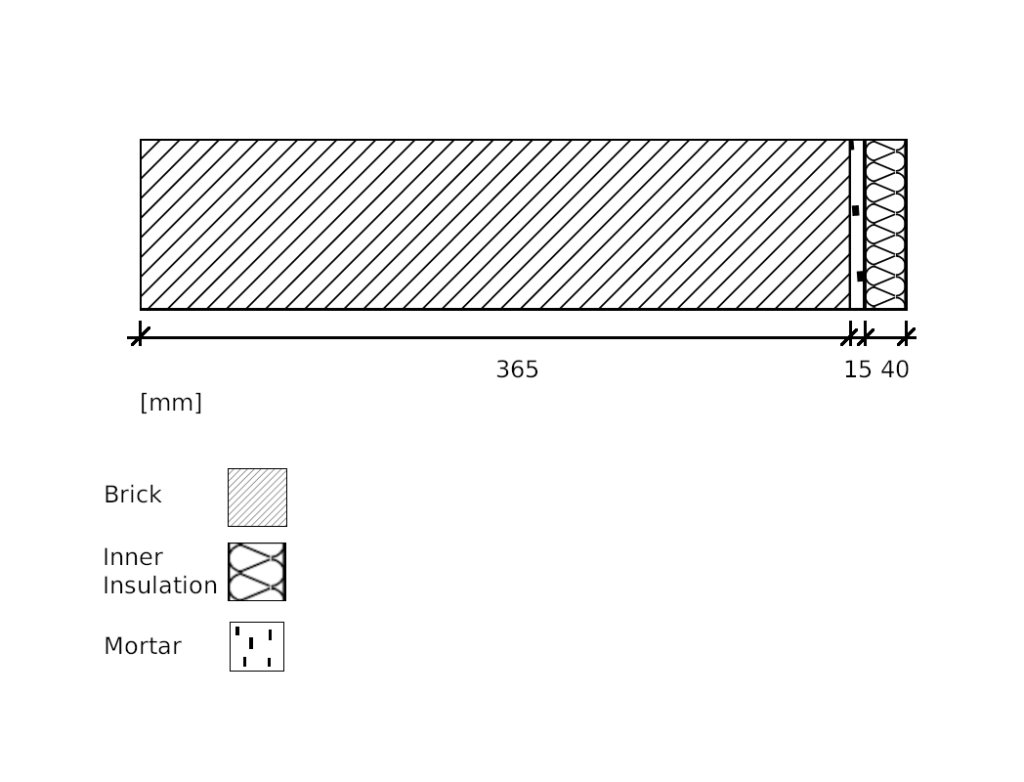
The fifth benchmark deals with the moisture redistribution inside the wall with capillary active inside insulation. The wall consists of three layers: load bearing, finishing and insulating material. Thermal conductivities of load bearing and insulating materials differ by factor 11 (at dry conditions).
Results
TODO : Images
Summary and conclusions
The results presented include those of tools that were under development during the project. Most of these tools are no longer available, or were never released to public. https://users.encs.concordia.ca/~raojw/crd/concept/concept000215.html has a list of many HAM tools developed (and abandoned) over the years.
The DELPHIN simulation model (https://bauklimatik-dresden.de/delphin) is fully validated against all benchmark cases. The model WUFI (https://wufi.de/en) had been validated for some HAMSTAD cases in an earlier development version during the project (IBP, 2002).
The HAMSTAD benchmarks cover many aspects of hygrothermal simulation models that are needed for engineering use cases. Focus lies on correct representation of moisture accumulation due to interstitial condensation and calculation of inside-insulation performance.
Yet, the benchmarks do not cover relevant model components, such as:
- realistic boundary condition calculation (sun position, solar short wave radiation loads, long-wave radiation exchange with sky, wind-driven rain loads)
- moisture adapting foils and vapour retarders
- special moisture source models (e.g. as result of ventilated cavities)
Also, the benchmark cases are only defined for 1D constructions. As the authors of the original project write:
„It should be mentioned that the benchmarks only cover one-dimensional cases. For accurate predictions of a buildings HAM-behavior two- and three-dimensional simulation models are required. This project group therefore suggests a continuation of this project in order to have assessment tools, which also covers two-dimensional models and benchmarks.“ – Hagentoft et al., HAMSTAD – WP2 Modeling Report
